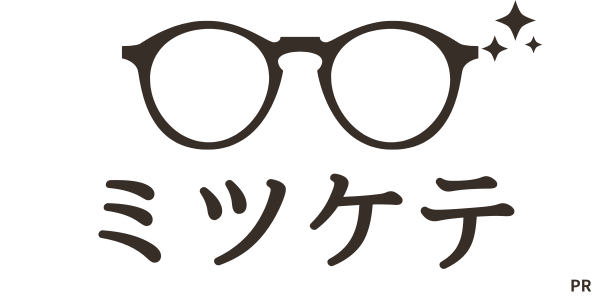After a husband’s passing, one of the most pressing concerns for the surviving wife is the amount of the survivor’s pension.
If the husband had been receiving 150,000 yen per month, how much will the wife actually receive?
This article explains the structure, estimated benefits, and key financial strategies to help ensure a secure future for surviving spouses.
- What Is the Survivor’s Pension?
- When the Husband Received a Monthly Pension of 150,000 Yen
- Pension Amount Varies by Wife’s Age
- When There Are Children
- When the Husband Was Enrolled Only in the National Pension
- Application Process for Survivor’s Pension
- Important Points When Receiving the Survivor’s Pension
- Practical Strategies for Financial Stability
- Example Case
- Why Understanding the System Matters
- Conclusion
What Is the Survivor’s Pension?
A survivor’s pension is a public benefit provided to the family members who were financially supported by the deceased.
Under Japan’s pension system, there are two main types of survivor pensions:
| Type of Pension | Pension System | Eligible Recipients |
|---|---|---|
| Basic Survivor’s Pension | National Pension | Spouse or child(ren) of the deceased |
| Employees’ Survivor’s Pension | Employees’ Pension (Kosei Nenkin) | Wife (or husband), child(ren), or parents |
If the husband was a company employee enrolled in Employees’ Pension Insurance, the wife is generally eligible for the Employees’ Survivor’s Pension.
If the husband was self-employed and enrolled only in the National Pension, eligibility depends on whether there are children.
When the Husband Received a Monthly Pension of 150,000 Yen
A monthly pension of 150,000 yen (1.8 million yen per year) typically includes both the Basic Old-Age Pension and the Employees’ Old-Age Pension.
For survivor benefits, only the earnings-related portion of the Employees’ Pension is considered.
| Item | Estimated Amount | Description |
|---|---|---|
| Husband’s earnings-related pension portion | Approx. 1,000,000 yen | Portion from Employees’ Pension |
| Wife’s survivor’s pension | Approx. 750,000 yen | Equivalent to three-fourths (¾) of the above |
| Monthly amount | Approx. 62,000 yen | Estimated payment to the wife |
In other words, even if the husband was receiving 150,000 yen per month, the wife would likely receive around 60,000 yen monthly after his death.
Pension Amount Varies by Wife’s Age
The amount of the survivor’s pension depends on the wife’s age, presence of children, and whether she receives her own old-age pension.
| Wife’s Age / Situation | Type of Pension | Approximate Monthly Amount | Notes |
|---|---|---|---|
| Under 40 (no children) | None | — | Not eligible for additional benefits |
| 40–64 years old | Survivor’s Pension + Middle-aged Widow’s Supplement | Around 70,000–80,000 yen | Includes approx. 580,000 yen annual supplement |
| 65 and older | Adjustment with own old-age pension | Around 50,000–70,000 yen | Pension coordination applies |
| With children | Survivor’s Pension + Basic Survivor’s Pension | Around 120,000–150,000 yen | Covers living and education costs |
The Middle-aged Widow’s Supplement applies when the wife is aged 40–64 with no children at the time of her husband’s death, adding about 580,000 yen per year to the payment.
When There Are Children
If the deceased husband had children under 18 years old, the wife can also receive the Basic Survivor’s Pension.
| Number of Children | Annual Amount | Monthly Amount | Remarks |
|---|---|---|---|
| 1 child | Approx. 781,700 yen | Approx. 65,000 yen | Base amount |
| 2 children | Approx. 997,000 yen | Approx. 83,000 yen | Includes 2nd child supplement |
| 3 or more | +228,900 yen per child | +19,000 yen per month | Added for each additional child |
A household with children can receive a combined monthly total of 120,000 yen or more, helping to cover daily and educational expenses.
This system is a crucial safety net for families with dependents.
When the Husband Was Enrolled Only in the National Pension
If the husband was self-employed and enrolled only in the National Pension, a wife without children is not eligible for any survivor’s pension.
However, if there are children, she may receive the Basic Survivor’s Pension.
| Situation | Eligible? | Details |
|---|---|---|
| Wife only (no children) | No | Not covered under the National Pension system |
| Wife with children | Yes | Amount depends on the number of children |
| Unpaid pension contributions | No | Must meet payment requirements |
For self-employed households, life insurance or mutual aid funds are essential to supplement the absence of survivor’s benefits.
Application Process for Survivor’s Pension
Applying for the survivor’s pension requires submitting specific documents.
Failure to apply promptly may delay or forfeit benefits.
| Step | Description |
|---|---|
| 1. Obtain application forms | Available at pension offices or local government offices |
| 2. Prepare documents | Family registry, residence certificate, death certificate, bankbook, etc. |
| 3. Submit application | File at the nearest pension office |
| 4. Payment begins | Usually within 2–3 months |
The application deadline is within five years from the day after death. Missing this deadline means the pension cannot be received.
Important Points When Receiving the Survivor’s Pension
The survivor’s pension is tax-exempt, meaning no income or residence tax applies.
However, other welfare programs may reduce benefits based on income thresholds.
If the wife already receives an old-age pension, a coordination adjustment (heikyū chōsei) is applied.
This means she cannot receive both the Basic Old-Age Pension and the Basic Survivor’s Pension simultaneously — she must choose the more beneficial option.
It’s strongly advised to consult with the pension office to determine which pension combination maximizes total income.
Practical Strategies for Financial Stability
In most cases, the survivor’s pension alone is not enough to cover daily living expenses.
Especially when the husband’s pension was around 150,000 yen per month, the widow’s benefit may drop to roughly 60,000 yen.
| Strategy | Description | Effect |
|---|---|---|
| Life insurance | Provides a lump-sum payment upon death | Covers living and funeral expenses |
| Mortgage insurance (group credit life) | Clears remaining home loan debt upon death | Reduces housing costs |
| Public support programs | Housing aid, medical expense subsidies, etc. | Decreases fixed costs |
| Part-time work or reemployment | Combines pension with earned income | Stabilizes household finances |
A balanced plan combining pension + additional income + public assistance can provide sustainable financial stability.
Example Case
Let’s look at a typical case where the husband (age 65) passes away and the wife (age 62, no children) survives.
| Item | Description | Estimated Amount |
|---|---|---|
| Husband’s pension | 150,000 yen/month (Basic + Employees’) | 1.8 million yen/year |
| Wife’s survivor’s pension | ¾ of earnings-related portion | 750,000 yen/year |
| Middle-aged widow’s supplement | Annual addition | 580,000 yen/year |
| Total annual amount | Combined | 1.33 million yen/year |
| Monthly total | Converted | Around 110,000 yen/month |
As seen, the Middle-aged Widow’s Supplement can significantly increase total benefits, helping to maintain a modest standard of living.
Why Understanding the System Matters
The survivor’s pension is not automatically granted — an application is required.
Many mistakenly believe it is automatically paid out, but failing to apply may result in losing eligibility.
After age 65, widows must often choose between their own pension and the survivor’s pension.
Because the optimal choice depends on individual circumstances, consulting a pension expert or government office is essential.
Understanding the system ensures that widows can receive the maximum possible support while planning a secure financial future.
Conclusion
If a husband received a monthly pension of 150,000 yen, his wife would generally receive around 60,000 yen per month as a survivor’s pension.
If she is between 40 and 65 years old, she may also receive the Middle-aged Widow’s Supplement, increasing her total to around 70,000–80,000 yen per month.
If she has children, the Basic Survivor’s Pension may raise the total to 120,000 yen or more.
Since the survivor’s pension alone may not cover all living expenses, combining it with life insurance, employment income, and public support programs is the most practical way to ensure financial stability.
Ultimately, understanding the details of the pension system and preparing in advance are the keys to living securely after the loss of a spouse.




